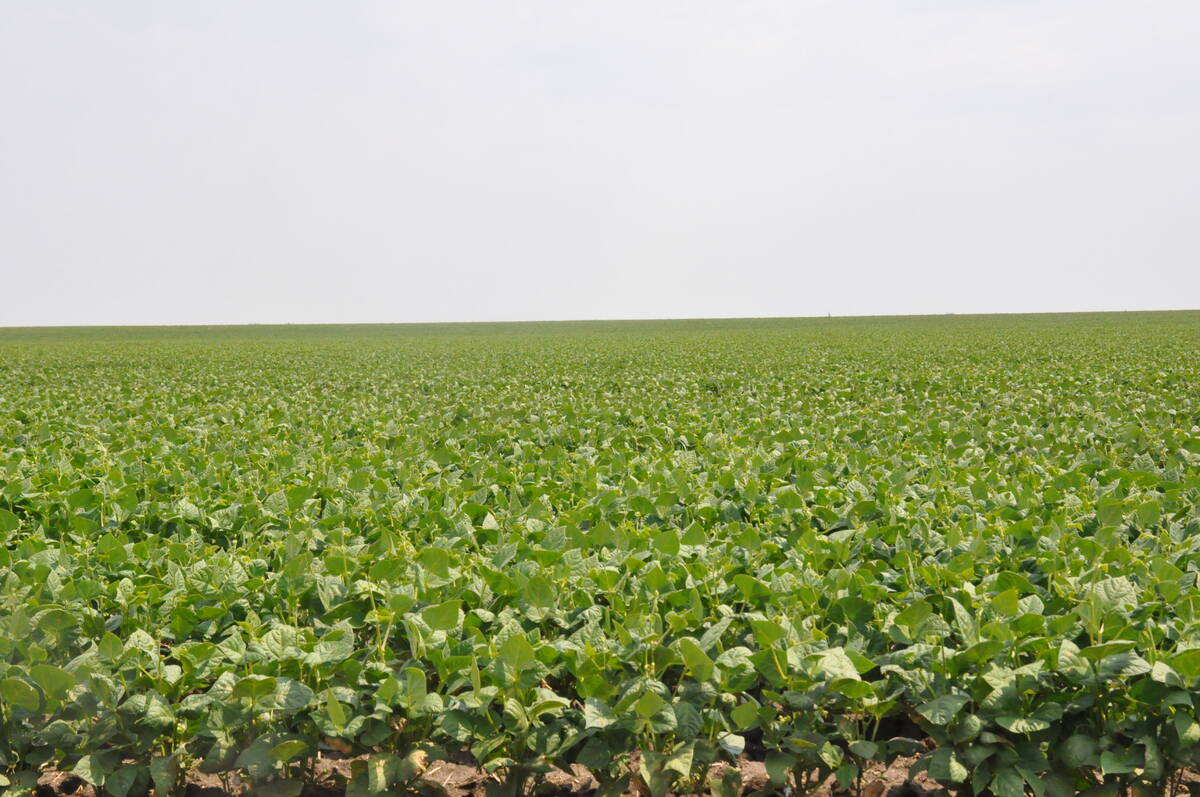A Manitoba company hopes to break into the booming nutraceutical and functional food market with Prairie Macha, a food ingredient rich in vitamins and minerals made from freshly squeezed alfalfa juice.
Sun Prime Extracts of Russell, Man., will operate alongside Sunridge Forages, which for the past 11 years has been exporting 15,000 tonnes of timothy hay per year to Japan.
The fledgling company has developed a process for harvesting, juicing and processing the nitrogen-fixing forage plant into a smooth, green powder.
It hopes to catch a wave similar to what propelled green tea sales into a decade of explosive growth that saw the beverage transformed from an obscure Asian tradition into an ingredient found in food as diverse as iced lattes, ice cream and green Hershey’s Kisses.
Read Also

Coloured bean production down, whites are up
Bean prices have been slumping and the outlook is for more of the same.
Sun Prime planned to take its pitch to Health Ingredients Japan 2007, a prominent trade show that began last weekend.
The company hopes that the health benefits of alfalfa, which is high in the pigment lutein, will appeal to Japanese food processors and nutraceutical marketers who want to cash in on that country’s aging demographics.
Not synthesized by the human body, lutein is also found in eggs. It has been shown to prevent age-related macular degeneration, a progressive eye disease that leaves sufferers with only peripheral vision.
Macha is the type of green tea used in an elaborate Japanese tea ceremony ritual.
Consultant Yuki Nagoya said Japan holds the key for opening up new markets because its fad-crazy consumers are always on the lookout for new things. What becomes popular there often spreads to other countries in the region.
“If you conquer Japan, then you don’t have to push anything,” he said.”It’s an open door. If you are successful in Japan, most likely you can go on to Korea, Malaysia or Taiwan.”
Sun Prime president Garry Halwas said the new venture complements Sunridge’s existing hay operation by providing a profitable alternative crop to use in rotation on the company’s 4,500 timothy hay acres.
“Japan has always been asking for Manitoba alfalfa, but it’s very hard to produce enough tonnage at 12 percent moisture content for compressing,” he said.
“If we could take the crop off the field when it’s wet, try and make a little extra value-added from the juice, then maybe we could still export what’s left over. It gives us something to play with.”
The alfalfa is harvested at the pre-bud stage up to three times per year with a silage cutter. It is then loaded onto a conveyor that carries it into a converted sugar beet press capable of squeezing 35 tonnes of alfalfa into 300 gallons of bright green juice per hour.
The remaining pulp, at 30 percent moisture, still contains 10 to 15 percent protein and makes excellent animal feed. Future possibilities include packing it in plastic bags, flushing the contents with nitrogen to inhibit spoilage and exporting it to Japan.
The juice, with a shelf life of 48 hours, is sprayed or freeze dried into a fine powder. Plans are also in the works to make the screw press portable by mounting it in a shipping container.
Halwas is looking for investors for a proposed $5 to $7 million food grade processing facility to be built at the existing Sunridge hay compressing facility. He hopes to have the drying infrastructure in place in time to serve next year’s growing season.
Project co-ordinator Candace Mitchske said Sun Prime markets the alfalfa powder as a food ingredient raw material and as a nutraceutical and functional food product.
Variety trials are planned to look at the best strains of alfalfa for juice production, as well as the possibility of feeding the product to layer hens to produce high-lutein eggs.
Capsules made from ground dried alfalfa plants are available at health food stores, but the taste is bitter and the texture too rough for use in most recipes, she said.
“What you get is a coarse material. If you go to mix it into a drink, you get kind of a scum that floats on the top, then settles into the bottom,” she said.
“Through our processing, we’ve refined it into a smoother, fine powder. That enhances its dissolvability, taste, texture as well as its concentration.”














